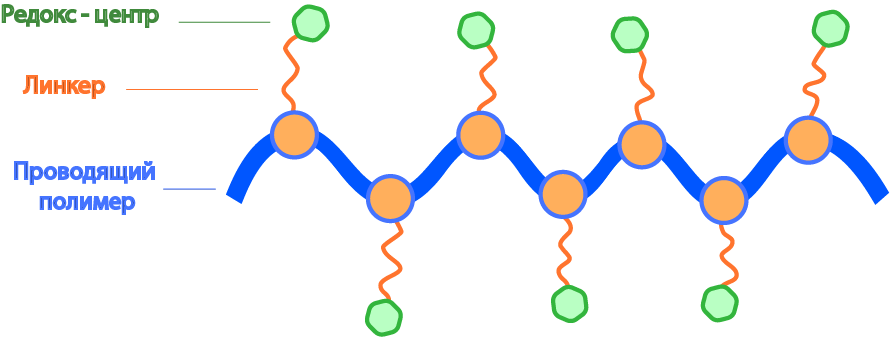RFBR Project №20-33-90122
(2020-2022)
The aim of the project is to develop a model of charge transfer in a new class of polymer materials for electrochemical power sources - redox-conducting polymers. Redox-conducting polymers are called hybrid materials in which discrete redox-active centers are connected to the main polymer chain, which has a system of conjugated π-bonds. These substances are in demand as active energy storage materials for a new type of electrochemical current sources - organic batteries. At the moment, the main body of work related to organic energy storage materials is devoted to the search for new and adaptation of already studied organic systems in order to achieve maximum specific characteristics that meet the needs of production. There are a number of model concepts that predict the capacity and operating voltage of organic electroactive materials, which makes it possible to carry out the directed synthesis of molecules with the required characteristics for these parameters; however, the optimization of the material in terms of the charge transfer rate is carried out, as a rule, empirically. In particular, the published data on the processes of charge transport in redox-conducting polymers show the absence of additivity of the properties of redox centers and the conducting skeleton upon close contact of active fragments in an individual molecule or composite. This suggests the need to develop correct model concepts of the charge transfer process for redox-conducting polymers, taking into account the presence of fragments with localized and delocalized charges in the composition of the electroactive material, which are capable of electron transfer among themselves. This project involves the development of such a model and its verification using the example of polymer complexes of nickel with salen-type ligands containing additional redox-active groups.
Planned Results
As a result of the project, an array of reference experimental electrochemical and operando spectroscopic data will be accumulated for model conducting, redox and redox-conducting polymers; Based on the modernization of existing approaches to the description of redox and conducting polymers, mathematical models describing the functioning of redox conducting polymers will be created and verified. Based on the results of the project, the graduate student will defend a dissertation for the degree of candidate of chemical sciences.

Publications
| Title | Link |
|---|